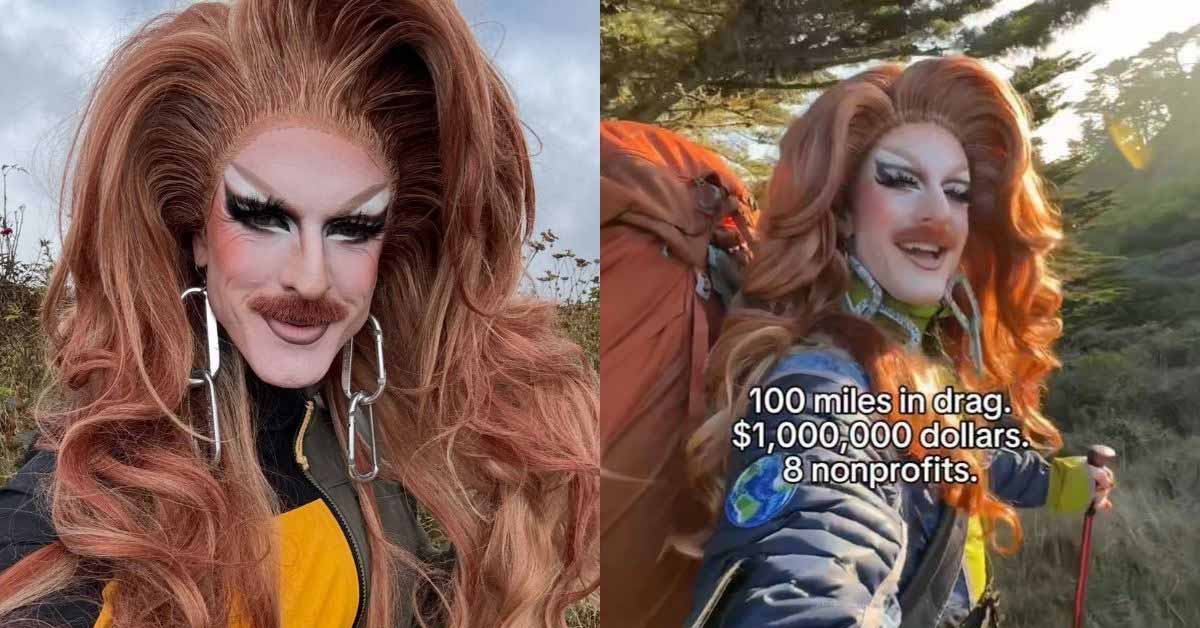While you’ve almost certainly seen a rainbow flag flying high in your community — or in your emoji keyboard — have you ever stopped to think about the meaning behind them?
For members of the LGBTQ+ community, it certainly doesn’t need to be Pride Month to embrace these banners — which represent and celebrate the diverse range of identities and experiences among the LGBTQ+ community.
To fully honor those experiences, it’s important to know the significance of these queer symbols — starting with the first-ever Pride flag: The Gilbert Baker Pride Flag.
→ Explore the full list of all LGBTQ+ Pride flags
By the way, we’ve included some links to be able to buy this flag — and some of the links may include affiliate links, which means we may earn a commission at no extra cost to you.
About the Gilbert Baker Pride Flag
History
Designed by Gilbert Baker in 1978, this flag is considered the “original” Pride flag. It offers a distinct symbol for the LGBTQ+ community to represent and celebrate their diverse identities.
The flag originally included eight colors, each capturing a different element of the LGBTQ+ experience and the importance of unity within the community.
Baker has been called the “Gay Betsy Ross” for his contributions to the LGBTQ+ community. The designer got his first sewing machine when he got out of the army in 1972 and while living in San Francisco, during what he called the “glam rock” era, started making his own clothes.
“It was an incredible place to be. It was a time of incredible empowerment, and political organizing, and community building, and artistic expression,” Baker said in a 2009 interview.
Until Baker’s design hit the scene, the only symbol the LGBTQ+ community had was the pink triangle, which was a classification mark given to them in Nazi Germany, making it a deeply traumatic symbol of oppression, rather than liberation.
Baker knew his community needed better.
“I didn’t even think twice about what the flag would be. A rainbow fit us. It’s from nature; it connects us to all of the colors, all of the sexualities, all of the diversity of our community,” Baker said.
Although Baker’s original design included eight colors representing various elements of nature, two colors were later removed — hot pink and turquoise — for price and practicality reasons.
That edited flag — called the Rainbow Pride Flag — became the most popular iteration of Baker’s design and was also created in 1978.
These two designs by Baker were truly the original representation of the LGBTQ+ community and are artifacts worth knowing.
Baker continued his life of advocacy up until his death in 2017. His legacy includes a memoir titled “Rainbow Warrior: My Life in Color,” as well as the Gilbert Baker Foundation, which educates future generations about Baker’s flags and provides an archive of the impact Pride flags have had across the globe.
“Flags are torn from the soul of the people,” Baker said in 2007.
Colors

The colors in Gilbert Baker’s Pride Flag each represent a different concept:
- Hot Pink: Sexuality
- Red: Life
- Orange: Healing
- Yellow: Sunlight
- Green: Nature
- Turquoise: Magic and art
- Indigo: Serenity and harmony
- Violet: Spirit
Get a Gilbert Baker Pride Flag: Flags For Good | Amazon
We’ve provided links to Flags For Good, which donates a portion of each Pride flag sale to LGBTQ+ nonprofits and has a fully carbon neutral production and distribution process. Use our links to save 10% off your entire order.
(We’ve also included links to Amazon for accessibility purposes.)
Plus, learn more about other Pride flags:
- All LGBTQ+ Pride Flags & Their Meanings
- Agender Pride Flag
- Androgyne Pride Flag
- Aromantic Pride Flag
- Asexual Pride Flag
- Bisexual Pride Flag
- Demigender Pride Flag
- Demisexual Pride Flag
- Drag Pride Flag
- Gay Men’s Pride Flag
- Genderfluid Pride Flag
- Genderqueer Pride Flag
- Gilbert Baker Pride Flag
- Intersex Pride Flag
- Lesbian Pride Flag
- Nonbinary Pride Flag
- Pansexual Pride Flag
- Philadelphia Pride Flag
- Polysexual Pride Flag
- Progress Pride Flag
- Queer Pride Flag
- Rainbow Pride Flag
- Transgender Pride Flag
- Two-Spirit Pride Flag
- … and read more LGBTQ+ good news



